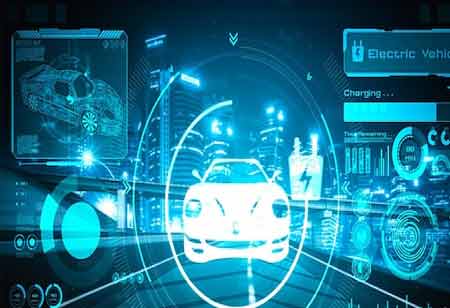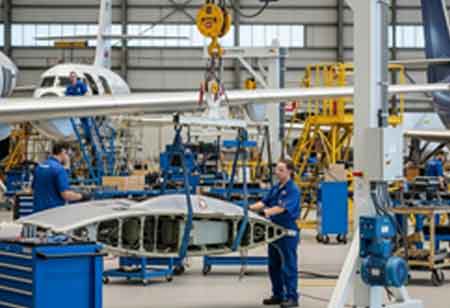The integration of electronic systems within vehicles has fundamentally transformed the landscape of mobility, influencing aspects of design, packaging, and the overall transportation experience. Previously, the automotive sector was characterized predominantly by mechanical components; however, it has now evolved into a sophisticated amalgamation of sensors, processors, and software.
Contemporary vehicles are no longer mere means of transportation; they represent intricate technological platforms that exemplify the convergence of engineering and digital intelligence. This modernization has established elevated standards for enhancing safety, efficiency, and connectivity, thereby setting a new benchmark within the automotive industry.
Engineering Electronic Systems to Perform and Be Reliable
The design and manufacturing of electronic systems for vehicles encompasses a multidisciplinary approach that integrates mechanical design, electrical engineering, computer science, and materials science. The increasing sophistication of automobiles necessitates that manufacturers develop systems capable of operating reliably under a variety of environmental conditions. Electronic components must exhibit resilience to temperature variations, vibrations, and moisture. Whether addressing a front-end module for collision avoidance or a module responsible for managing battery power in an electric vehicle, each system is meticulously engineered to adhere to rigorous standards.
The process of electrification has a pronounced impact on both the design and functionality of vehicle electronics. Within an electric vehicle powertrain, precise management of energy distribution is essential, alongside effective thermal regulation and the implementation of regenerative braking systems. These components are interconnected within a shared network, with their operations executed through electronic control units.
Manufacturers allocate substantial resources to research and development aimed at enhancing the efficiency of these units and increasing vehicle range while ensuring that performance and safety are not compromised. Furthermore, hybrid vehicle models necessitate seamless interaction between internal combustion engines and electric motors, thereby underscoring the importance of software optimization and integration.
Safety, Connectivity, and Role of Data
Historically, safety features were regarded as optional components of vehicle design; however, they are now fundamental to contemporary automotive engineering. Modern electronic systems incorporate a comprehensive array of features, including lane-keeping assistance, blind spot monitoring, adaptive cruise control, and emergency braking. The efficacy of these systems relies on an array of sensors, such as radar, cameras, and ultrasonic devices, which must operate with high precision and minimal latency.
Consequently, manufacturers bear the responsibility of ensuring that their vehicles can reliably detect, interpret, and respond to environmental conditions. This necessitates the development of complex algorithms and the implementation of rigorous testing protocols to ensure compliance with industry standards and regulations. Given the likelihood of evolving regulatory frameworks in various jurisdictions, vehicle systems must be designed with flexibility to accommodate these changes.
Electronic systems are fundamentally transforming transportation by facilitating connections between vehicles and infrastructure, as well as communications between mobile devices and other vehicles. These systems deliver real-time traffic updates, "over-the-air" software enhancements, and predictive maintenance notifications, thereby enhancing both security and scalability for big data applications.
Manufacturers are increasingly employing communication protocols and cybersecurity frameworks to safeguard the integrity of transmitted data. In this connected ecosystem, vehicles function as discrete nodes, necessitating that each feature is optimally designed. The significance of data in vehicle electronics is escalating, as integrated sensors continuously gather information regarding driver behavior and mechanical wear, which in turn refines predictive maintenance strategies. Engineers are incorporating this data into system architecture to enhance software algorithms and anticipate future performance requirements.
Sustainable Progress and the Road Ahead
Sustainability is becoming increasingly integral to the selection of materials and manufacturing processes utilized in electronic systems. Engineers are investigating innovative approaches to reduce the environmental impact of both components and production facilities. This includes the adoption of lightweight materials, recyclable elements, and energy-efficient manufacturing practices to align with regulatory mandates and corporate sustainability objectives.
The transition towards electric mobility has heightened the importance of sustainably sourcing batteries and rare earth elements, which are essential for optimal electronic performance. Furthermore, manufacturers are striving to extend the lifecycle of components by implementing modular designs and regular software updates, thereby minimizing the frequency of replacements and reducing electronic waste.
Electronic systems play a pivotal role in advancing vehicles, particularly concerning emerging technologies such as autonomous driving, driver assistance, and integrated transportation networks. These innovations require high-performance electronics that can process data rapidly, make real-time decisions, and ensure fail-safe redundancy. Current research is focused on enhancing sensor fusion, reducing latency in communication protocols, and advancing artificial intelligence for predictive modeling.
It is essential that innovation consistently prioritizes user safety, data privacy, and long-term durability. This marks a significant paradigm shift in transportation solutions compared to traditional notions of technical innovation. The realities of scalability, safety, and sustainability are now vital considerations in advanced mobility. Thus, electronic systems are poised to remain central to vehicle development for the foreseeable future.









